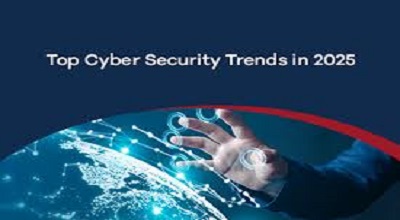Cybersecurity in Cloud Computing
Cybersecurity in Cloud Computing: In 2025, cloud computing continues to dominate the digital landscape, offering businesses scalability, flexibility, and cost-efficiency. However, with increased adoption comes heightened cybersecurity risks. Cyber threats are evolving rapidly, and organizations must stay ahead to protect their data.
At ZoomDoors.com, we bring you the latest insights into cybersecurity in cloud computing for 2025, covering emerging threats, cutting-edge defenses, and best practices to secure your cloud infrastructure.
Why Cybersecurity in Cloud Computing is Critical in 2025?
As businesses migrate more workloads to the cloud, cybercriminals are refining their attack strategies. Here’s why cloud security is more important than ever:
- Increased Cloud Adoption – More companies rely on multi-cloud and hybrid cloud setups.
- Sophisticated Cyber Threats – AI-driven attacks, ransomware, and zero-day exploits are on the rise.
- Regulatory Compliance – Stricter data protection laws (GDPR, CCPA) require robust security measures.
- Remote Work Risks – Distributed workforces expand attack surfaces.
Top Cybersecurity Threats in Cloud Computing for 2025
1. AI-Powered Cyberattacks
Hackers are leveraging artificial intelligence to automate attacks, bypass traditional security measures, and launch hyper-targeted phishing campaigns.
2. Ransomware-as-a-Service (RaaS)
Cybercriminals now offer ransomware tools on the dark web, making it easier for less-skilled attackers to target cloud environments.
3. Zero-Day Exploits in Cloud Platforms
Attackers exploit unknown vulnerabilities (zero-days) in cloud services before vendors can patch them.
4. Insider Threats & Misconfigurations
Human error and misconfigured cloud settings remain leading causes of data breaches.
5. Supply Chain Attacks
Hackers infiltrate cloud services via third-party vendors, compromising entire networks.
Latest Cloud Security Trends for 2025
1. Zero Trust Security Model
- “Never Trust, Always Verify” – Every access request is authenticated, regardless of origin.
- Micro-Segmentation – Limits lateral movement in case of a breach.
2. AI & Machine Learning for Threat Detection
- Behavioral Analytics – Detects anomalies in real-time.
- Automated Incident Response – AI-driven systems mitigate threats faster.
3. Quantum-Resistant Encryption
With quantum computing advancing, encryption methods like post-quantum cryptography (PQC) are being adopted.
4. Secure Access Service Edge (SASE)
Combines network security & WAN capabilities into a single cloud-based service.
5. Confidential Computing
Protects data in use via hardware-based encryption (e.g., Intel SGX, AMD SEV).
Best Practices for Cloud Security in 2025
1. Implement Multi-Factor Authentication (MFA)
- Adds an extra layer of security beyond passwords.
2. Regular Security Audits & Penetration Testing
- Identifies vulnerabilities before hackers do.
3. Encrypt Data at Rest & in Transit
- Use AES-256 encryption for maximum security.
4. Adopt a Cloud-Native Security Posture Management (CSPM) Tool
- Automates compliance checks and detects misconfigurations.
5. Employee Cybersecurity Training
- Reduces risks from phishing and social engineering.
Future of Cloud Security: Predictions Beyond 2025
- Self-Healing Cloud Networks – AI will automatically patch vulnerabilities.
- Decentralized Identity Management – Blockchain-based authentication.
- Biometric Cloud Access – Facial recognition & fingerprint logins.
FAQs on Cybersecurity in Cloud Computing 2025
1. What is the biggest cybersecurity threat in cloud computing for 2025?
AI-driven cyberattacks are the most concerning, as they can adapt and bypass traditional defenses.
2. How does Zero Trust improve cloud security?
It enforces strict identity verification for every access request, minimizing breach risks.
3. What is Confidential Computing?
It encrypts data while in use, preventing unauthorized access even if a system is compromised.
4. Why is ransomware targeting cloud environments more in 2025?
Because businesses store critical data in the cloud, making them lucrative targets.
5. How can small businesses improve cloud security?
By using MFA, encryption, and employee training while leveraging affordable CSPM tools.
Conclusion
As cloud computing evolves in 2025, so do cybersecurity threats. Staying informed and adopting Zero Trust, AI-driven security, and encryption best practices will be crucial.
At ZoomDoors.com, we help businesses navigate the ever-changing cybersecurity landscape. Stay secure, stay ahead!

